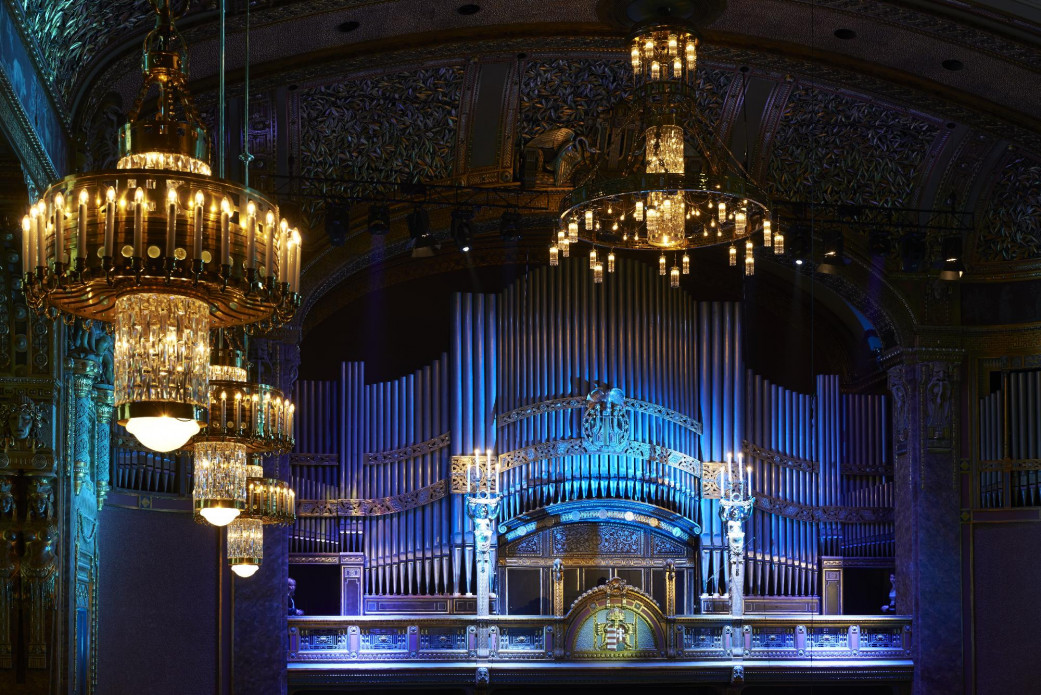The rebirth of the Voit-organ in the Grand Hall
Thanks to a decade of tireless efforts and persistent work, today the most beautiful jewel of the Grand Hall, the Voit-organ can shine in its former splendour. Its reconstruction is regarded as a pioneering achievement all over the world.
The organ-reconstruction in figures:
Amount of the timber used: 100 m3
Duration of the project: 2009–2018, all together 9 years.
The total investment in the project: 800 million HUF, out of which the expenses of the reconstruction process was 711,2 million HUF.
Having considered artistic, architectural, heritage maintenance-related, economic and organ historic criteria, the Senate of the Liszt Academy approved a resolution of the reconstruction of the original Voit-organ on 18 May, 2010. The President of the institution established an organ committee, which consisted not only of organists but also of financial, legal and technological experts. The committee was in charge of preparing the project and of mapping its feasibility and possible funding sources. As the result of the intense study and scrutiny, in November, 2014, the Government of Hungary made a decree to support the introduced project. Having won the international public procurement tender, a German organ manufacturer with most excellent recommendations, Johannes Klais Orgelbau and its Hungarian partner company, AerisOrgona Ltd. carried out the reconstruction work. The reconstruction plan was devised and the organ-related expertise was brought in by Balázs Szabó in collaboration with the professional committee consisting of the members of the organ sub-department and the technical staff of the Liszt Academy. This is the very first reconstruction project in the world, in which not only the sound and technical parameters but also an early electric action has been reconstructed with complete authenticity in every part and detail. At the same time, independently of the former system, some of the most cutting edge features of organ building technology also come to show, such as the embedded Setzer combination, a computer-based system which facilitates the management of the stop combinations. With the Voit-organ, not only the Liszt Academy, music education in general but also Hungary as a country is enriched with a globally unparalleled organ treasure.
Contributors to the implementation of the organ reconstruction project were:
Dr. Andrea Vigh – President of the Liszt Ferenc Academy of Music
Dr. András Batta – Former President of the Liszt Ferenc Academy of Music
László Fassang – Organ professor of the Liszt Ferenc Academy of Music, organ expert
Dr. Balázs Szabó – Organ professor of the Liszt Ferenc Academy of Music, organ expert
Gergely Lakatos – Chief engineer, project leader
Martin Kuhnt – Organ expert in charge of the overall assessment
Dr. Miklós Bányai – Chair of the project preparation committee
László Csepeli – Technical inspector, technical expert
– and many others



